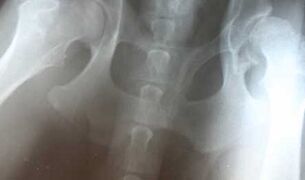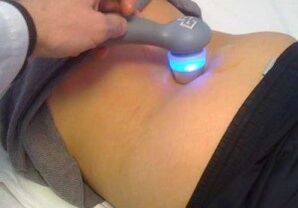
Arthrosis of the hip joint is a pathology that occupies a leading position among various degenerative-dystrophic problems of the musculoskeletal system. There are many causes that provoke the disease, therefore, people of different age groups are at risk. Nevertheless it should be noted that the hip joint most often loses in middle-aged and elderly people.
Grade 1 hip arthrosis is successfully treated with medication without surgery. However, unfortunately, patients are not in a hurry to consult a doctor immediately, mistakenly believing that painful sensations will go away on their ownIn the meantime, the disease process has already begun and is progressing more and more every day. The distinction between primary arthrosis of the hip joints, which has unclear etiology and secondary, resulting in such diseases:
- Perthes disease;
- congenital dislocation;
- abnormal tissue development in the hip joint;
- aseptic necrosis of the femur;
- inflammatory processes;
- hip fracture.
One or two hip joints can be affected. Bilateral arthrosis is not uncommon, and can cover the spine and knee joint with a unilateral disease process.
due to arthrosis of the hip joint
- The deterioration of arterial blood flow and its venous outflow, resulting in inadequately nourished tissues, is an accumulation of under-oxidized metabolic products that are responsible for the activation of the enzyme;
- Mechanical factors that cause joint overload, for example, overweight or professional sports;
- cartilage, hormonal disruption, biochemical changes in metabolic disorders;
- traumatic disorder, cervical and pelvic fractures;
- necrosis of the head tissue of the hip bones;
- joint inflammation, infectious processes;
- Pathological changes in the spine (kyphosis, scoliosis) and flat feet;
- Congenital dislocation of femur;
- congenital malformation of joint development;
- sedentary lifestyle;
- Hereditary disturbances of the body (skeletal weakness, metabolic disorders, structural features of cartilaginous tissues).
symptoms of arthrosis of the hip joint
The common symptoms of this pathological process are distinguished, however, it should be understood that they may vary at different stages of the development of arthrosis. The main symptoms of hip joint damage are:
- Waist, hip, joint and knee pain that does not subside even when resting;
- hardness and hardness;
- limping;
- femoral atrophy;
- The affected limb becomes much smaller.
The main symptom of arthrosis of the hip joints is pain, intensity and duration, as well as the nature and localization of which depends entirely on the characteristics of the disease process. It is best to start treatment at the beginning of the illness, when the discomfort is justIs not very clear. If proper measures are not taken in time, the pain will start to intensify, resulting in greatly limited mobility of the affected limb.
Grade 2 hip arthrosis is characterized by acute pain that radiates to the waist and thigh. In this case, the functioning of the joint is obstructed, lameness appears, internal movement towards the hip and abduction is limited. Abductor and extensorThe muscles lose their strength, bone growth is seen on X-rays, which can stretch strongly. The head of the femoral bone is deformed, its contour is deformed, and the volume increases. Also, the cyst of the jointCan be formed in the most stressed areas.
In stage 3 of the development of arthrosis, the pain becomes permanent and can even bother you at night. It becomes so difficult to walk that you have to use a special cane. In the hip joint, movement is limited. , The muscles of the buttocks, the affected thigh and lower leg atrophy, and the leg is short. All this leads to changes in the changes and an increase in the load on the affected joint. As a result of an increase in bone growth, the joint space disappears, andThe joint grows together, eventually losing its mobility.
treatment of arthrosis of the hip joint

If the disease is detected at an early stage, then conservative methods of treatment are preferred, using various drugs. The patient is prescribed mainly anti-inflammatory nonsteroidal drugs, which cause inflammation andCompletely relieves inflammation, which reduces pain syndrome. Along with muscle spasms, muscles are relaxed, whose action is aimed at encouraging blood circulation and relieving cramps. Also, for arthrosis, chondroprotectors are often used - drugs that allow you to restore thin cartilage tissue.
Do not forget about therapeutic massage and physiotherapy methods, as the effectiveness of such procedures is very high. Often, they try to treat the affected dishes with various ingredients, lotions and ointments according to folk cuisine, but theseNot all remedies can have a proper therapeutic effect. With their help, you can only temporarily relieve pain and muscle spasms. Before treating arthrosis of the hip joint, it is mandatory to consult a doctor, because aOr independent use of another drug can only worsen an already complex condition.
gymnastics for arthrosis of the hip joint
Gymnastics plays an important role in the treatment of the disease. Exercises specifically selected for arthrosis of the hip joint prevent its fusion and maintain mobility. In this way when developing a sore joint, you need to be very careful. Exercise is required so that they do not injure themselves extravagantly. Before and after medical practice, it is recommended to massage the muscles in the area of the thigh and affected joint to prevent the appearance of discomfort.
Water is an excellent aid in the treatment of arthrosis, so it is useful for the patient to swim in the pool, river or sea. Also, a hot bath, in which you can perform the smooth and slow movements of your feet, pain. Will help calm and relieve muscle tension. It is important not to overload the diseased joint and relax as much as possible.

















































